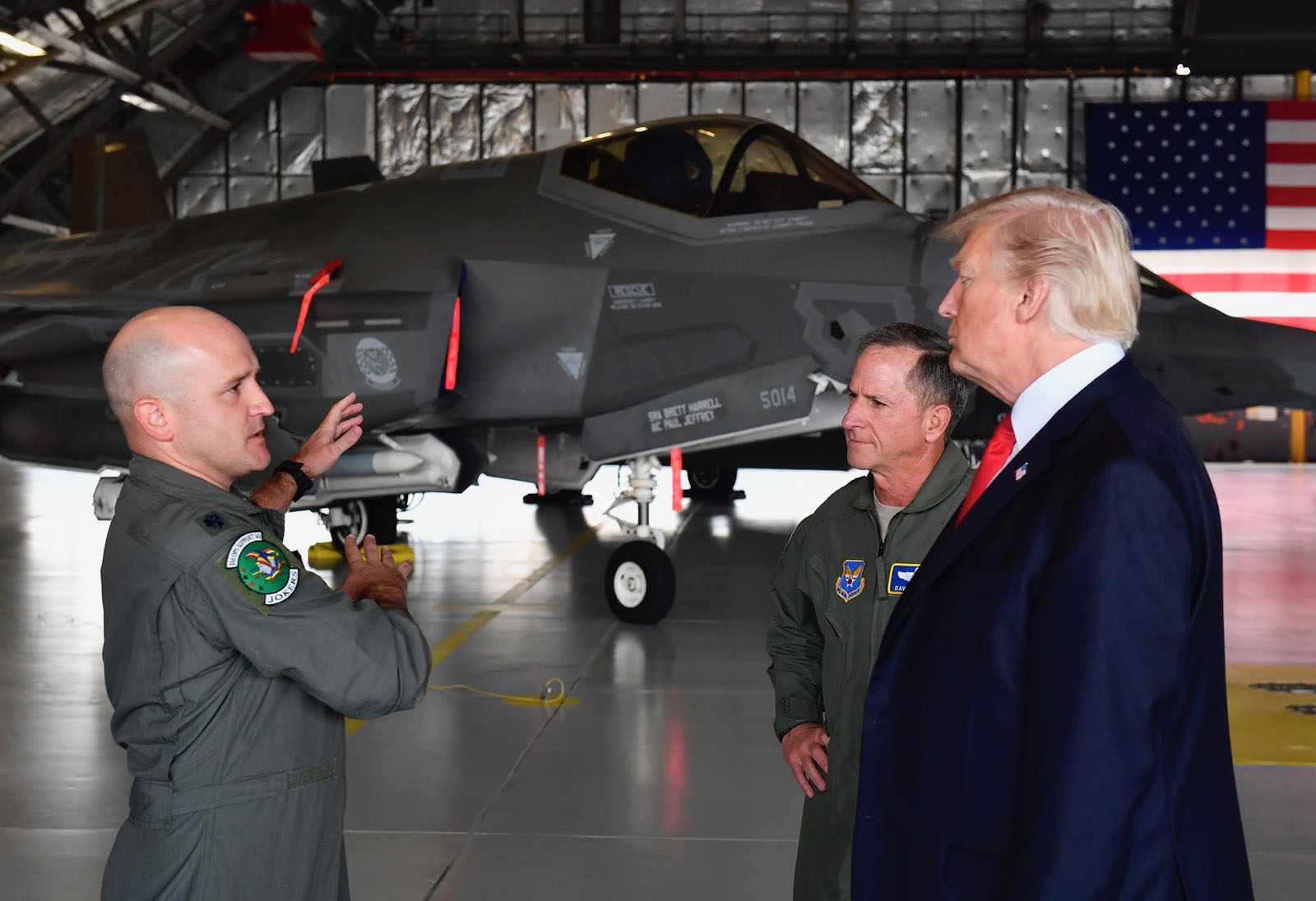Lt. Col. Nick "Miles" Edwards, left, and Air Force Chief of Staff Gen. David Goldfein brief President Donald Trump on the F-35A Lightning II during the Chief's Airpower Demonstration designed to highlight current and future national defense requirements Sept. 15, 2017, on JB Andrews, Md. Air Force photo by Scott M. Ash.
As the Air Force wraps up its second year of operational service with the F-35, Chief of Staff Gen. David Goldfein says he “could not be happier” with the aircraft, and that it is living up to its billing as a “game-changer.”
Speaking with Air Force Magazine in his Pentagon office, Goldfein said the F-35 provides its pilot with all the information about the battlespace—even before takeoff—that an F-16 pilot like himself would only have seen after a mission, debriefed with data provided by range instrumentation and command and control aircraft.
“We almost mislabeled the F-35,” he said, “because it does far more” than simply “deliver ordnance” in the attack and fighter mission. “It’s a fusion machine,” he said, gathering intelligence, surveillance, and reconnaissance information, and performing command and control functions.
“It does it all. It really operates across the spectrum,” Goldfein asserted.
He noted that in debriefing after an F-16 mission, Goldfein saw threats he’d missed, aircraft his sensors didn’t detect, and other gaps in the situational picture.
Now, with the F-35, “the young lieutenant that jumps in the F-35, he’s seeing that picture, not during the debrief, but during the flight. And actually, he’s seeing it while he’s taxiing out. That’s a fundamental game-changer,” said Goldfein. The pilot can manage the battle in an “optimal” way without missing opportunities or unseen perils, he said.
Among the newest Block 3F F-35s, Goldfein said squadrons are turning in mission capable rates of 80 percent, which is higher than USAF standards and far better than aircraft at this level of maturity.
Comparing notes with his counterpart, Marine Corps Commandant Gen. Robert Neller, Goldfein said both are seeing the same readiness levels “at home and deployed.”
The F-35 has deployed from its Hill AFB, Utah, home base to Alaska, Japan, and Europe, so far. Preparations are being made to base the F-35 at RAF Lakenheath, in the U.K.
Goldfein said he’s spoken with F-35 pilots in Italy and Israel—Israel has already used the F-35 in combat—and “what they’re telling me is, operationally, the airplane is absolutely magnificent.”
As the head of the service buying the greatest number of F-35s, Goldfein said, he believes it’s part of his job to help the program partners “to continue to work and drive down the flying costs [and] sustainment costs, … and we have a full court press on that.”
Goldfein observed that the F-35 has been like two programs: the problem-plagued project of before 2012, and the one since, which has performed consistently well, both in terms of what the aircraft provides operationally and in declining acquisition costs.
He said it’s his preference that the early-model aircraft in USAF service—which have not fared as well in maintainability and sustainability—be upgraded to the 3F or better configuration. However, “the question is, whether it’s affordable.” If so, “that would be where I place precious dollars.”
Right now, he said, “We’re focused on getting as much combat capability as we can as quickly as we can in the operational force,” and the early model aircraft are primarily used in pilot training. “Whether we go back and retrofit [those jets] is something we’ll continue to look at, but it’s going to be fundamentally a resource discussion,” he said.
